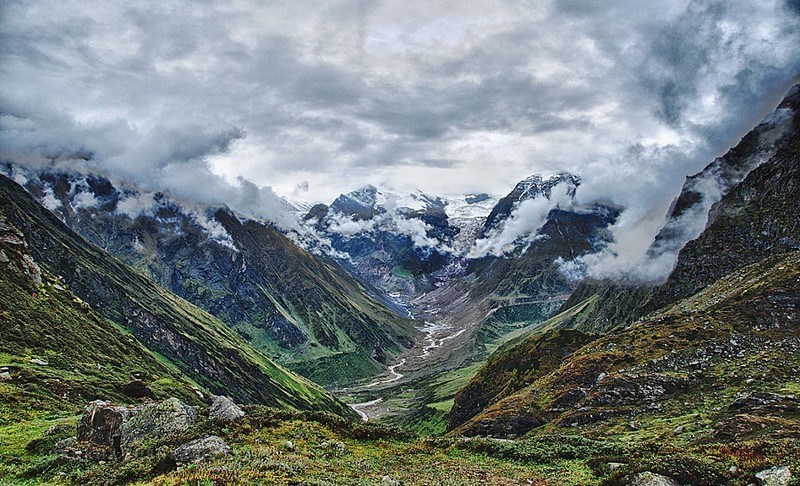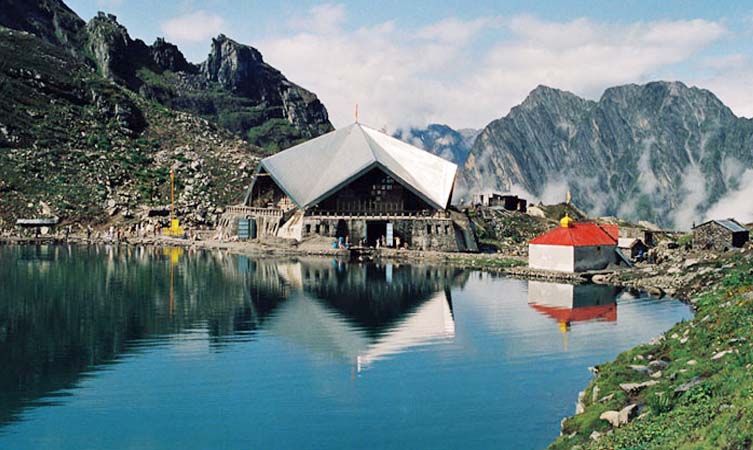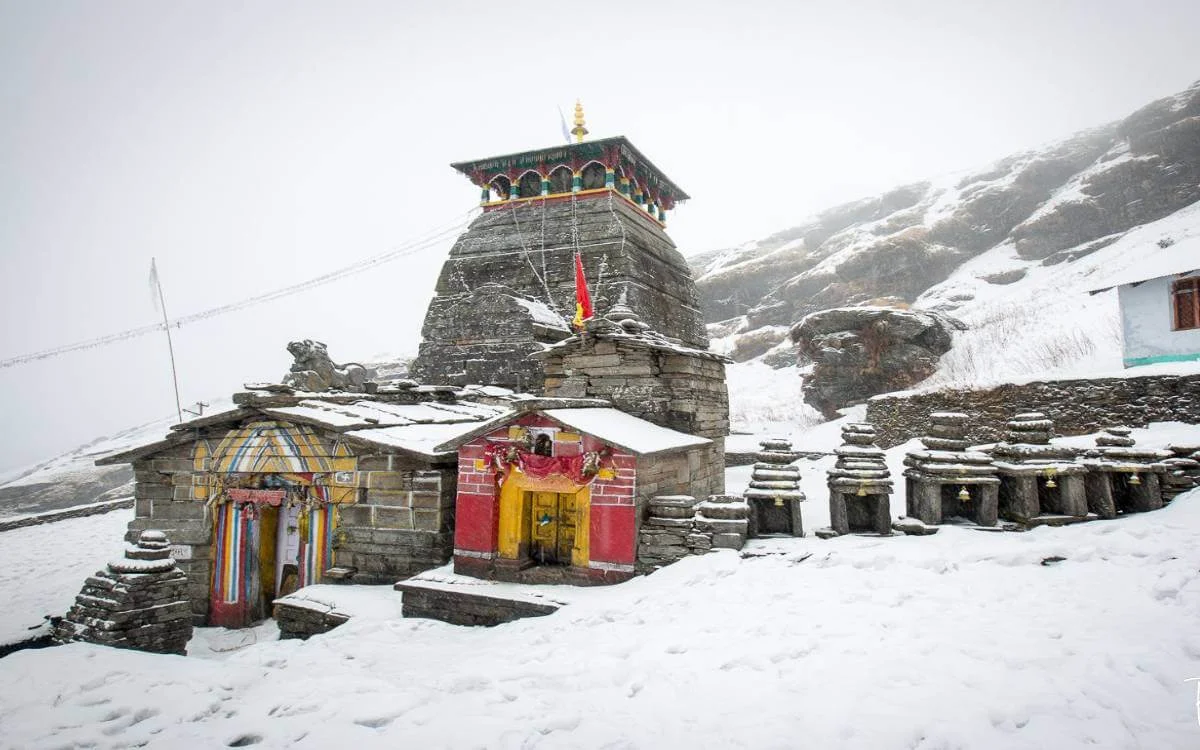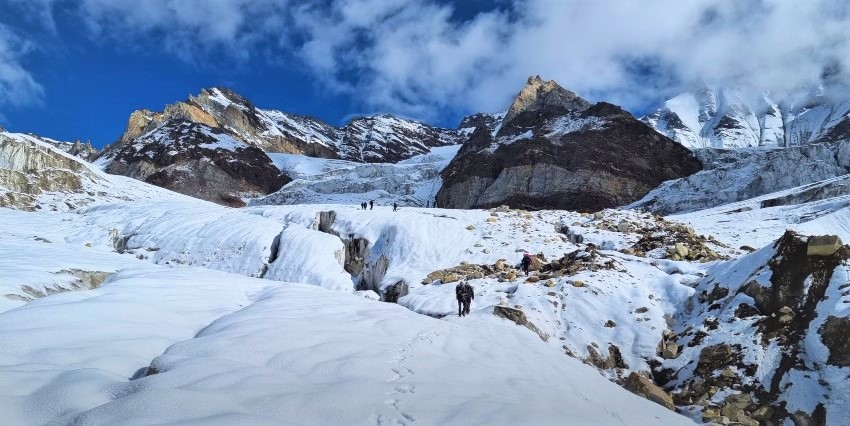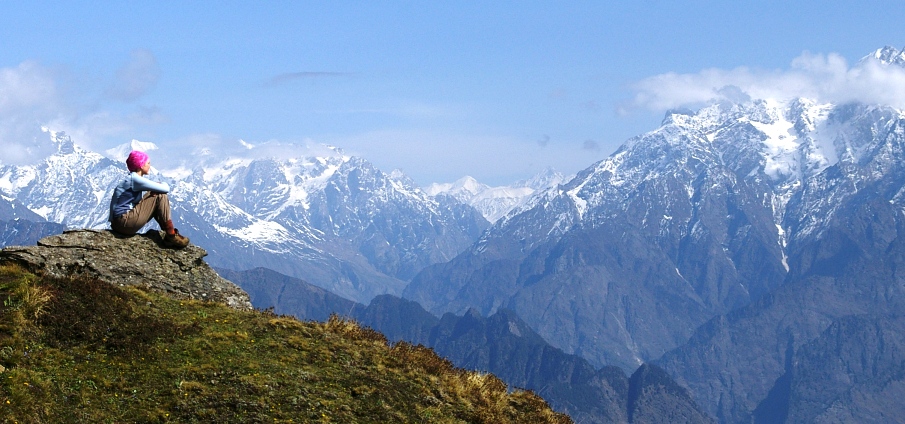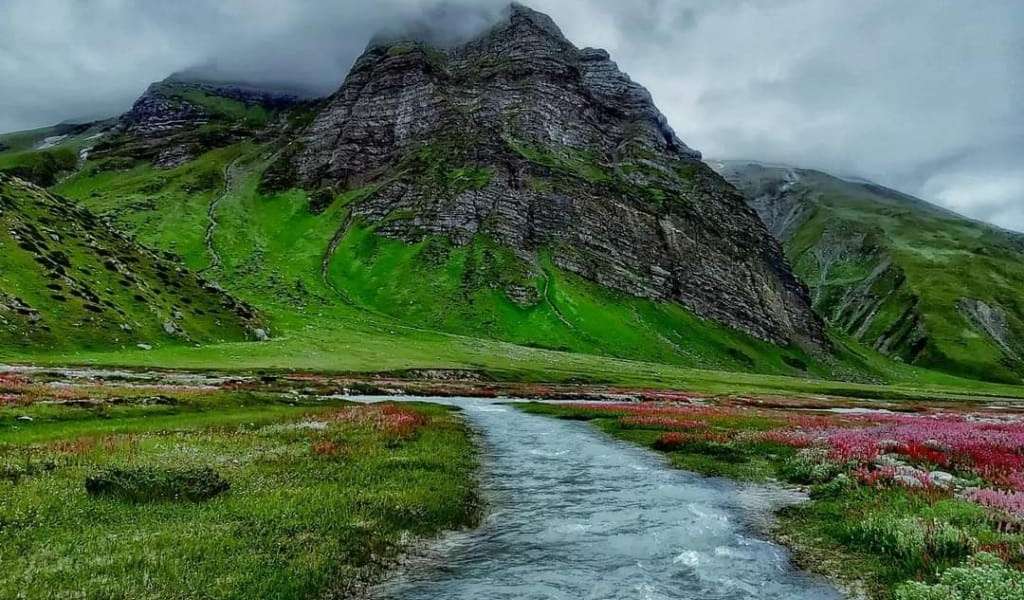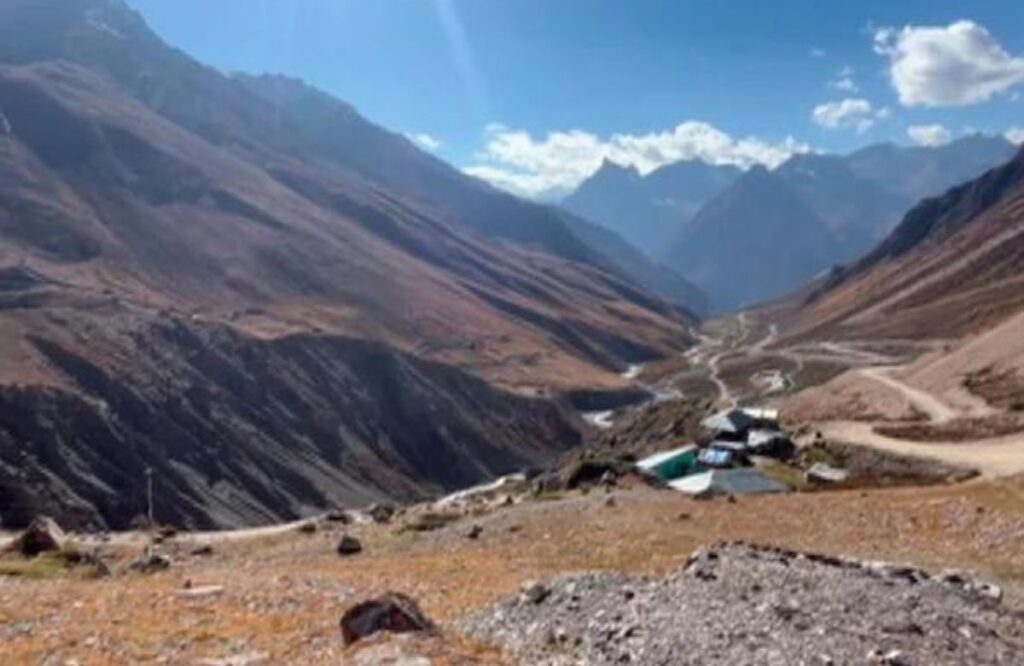There are treks you do for the view, and there are treks that change the way you breathe. Mayali Pass (मयाली पास) belongs to the second kind. High up inside the Garhwal Himalayas, at more than 5 thousand meters, this pass joins the Bhilangana Valley with the Kedarnath Valley. It is wild, far off, and no longer the sort of path that helps you to stroll casually.
The beginning is modest. You reach Ghuttu, a small village wrapped in fields and old wooden houses. People here still greet strangers with folded hands. Streams run past the paths, and evenings are quiet except for the sound of cattle bells. Once you leave Ghuttu behind, the forest swallows you whole. The ground turns steep, and slowly you realise you are stepping into a world where pace and time are measured differently.
The Path as It Opens
From Ghuttu, the trail rises to Reeh and later to Gangi, one of those villages where you can still see life the way it might have been a century ago. Kitchens smoke with wood fires, children chase each other barefoot, and people tell you stories about gods walking these slopes.
Past Gangi, the climb stiffens. Kharsoli comes first, then Chowki, where the forest finally breaks and meadows stretch under the sun. These meadows are not gentle lawns. They are rough, filled with stones, and yet, when the sky clears, you can see snow peaks standing tall around you.
From here, the path bends upward again, towards Masar Tal (मासर ताल). This high-altitude lake looks like a patch of sky dropped on earth. At dusk, the water turns dark, swallowing colours until stars appear above and inside it. A little further lies Vasuki Tal (वासुकी ताल), a sacred lake tied to old legends of the Pandavas. Both lakes feel more like shrines than camps.
The climb to Mayali Pass is the part that breaks most people. Snow patches, moraines, and thin air stretch every step. The body resists, lungs protest, yet you keep going. Then suddenly the ridge is under your feet. On one side, the Bhilangana Valley. On the other hand, the Kedarnath Valley. Peaks rise all around: Thalay Sagar, Meru, Kedar Dome. They don’t pose for you. They just stand, silent and watchful, as they always have.
A Land of Stories
Mayali is not just a test of endurance. It is also a land of कहानियाँ. Locals speak of हनुमानजी passing through, carrying the Sanjeevani. They speak of the Pandavas walking these ridges, leaving behind whispers in the stones. Even the lakes carry names from myth. For people here, these are not tales to entertain tourists. They are part of the landscape itself.
When pilgrims visit Masar Tal or Vasuki Tal, they tie threads on nearby rocks, murmur prayers, and leave offerings. They believe the gods still listen. The silence of the lakes makes it easy to believe the same.
Who Should Take This Path
Mayali is not for beginners. You need strong legs, lungs that can bear thin air, and the kind of patience that lets you walk long hours without complaint. Weather shifts without warning. Altitude sickness can creep in. The trail is harsh and often unforgiving.
But that is also what makes it meaningful. Mayali does not hand out easy gifts. It asks effort, then gives something much heavier in return.
Nights You Don’t Forget
- The camps stay long after the trek ends.
- At Kharsoli, you fall asleep to the river rushing past.
- At Chowki, the meadow is wide and the sky feels endless.
- At Masar Tal, you see stars scatter across the lake until you cannot tell where water ends and sky begins.
- Near Vasuki Tal, dawn paints the peaks in fire while the air is so thin it feels like prayer itself.
- These nights are not just pauses. They are part of the journey.
Meeting People Along the Way
In between the forests and ridges, you meet shepherds and villagers. They don’t speak in polished sentences. Their words are plain, but they stay with you. One shepherd I met before sunrise said softly, “यहाँ पहाड़ इंसान की हिम्मत को पहचान लेता है।” The mountain notices courage. It doesn’t care about speed. It doesn’t care about strength. It only sees whether you keep going.
What Mayali Leaves Behind
- When you return, the pass does not leave you.
- You remember the bells tied to trees that rang faintly in the wind.
- You remember the sharp crunch of snow under tired boots.
- You remember the silence that wrapped the ridge like a blanket.
- You remember faces in small villages, and the smoky smell of their kitchens.
These fragments become part of you. They rise again when life in the plains grows too noisy.
Closing Thought
The Mayali Pass Trek is not only a path across valleys. It is where प्रकृति (nature) and भक्ति (faith) move together. It is where stories live in water and stone. And it is where silence becomes the strongest guide.
Those who walk in Mayali rarely speak of it in simple words. Because the trek is not just seen. It is carried, quietly, for the rest of your life.

